Economic Basics: Supply and Demand
(Lecture Notes from Mr. Kersey's 8th Grade U.S. History Class)This is just a super simplified version of the rules of supply and demand in a market economy. Some of this can be a little confusing if you over think it, so don't. Some students may have a difficult time with the graphs, and some may not get it without them. Find what works for you, go with it, and ignore the rest.
Demand
Our first law of demand is that (generally) the higher the price of something, the lower the quantity that will be demanded. The lower the price, the higher the quantity that will be demanded.This makes sense, since most people do not want to pay a ton of money for something, but they do like a bargain.
We can represent this with a demand curve. Let's look at one for slices of pizza:
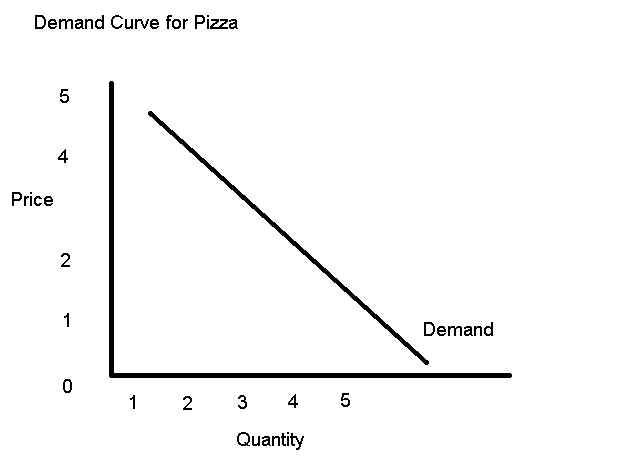
You can see that the more Luigi charges per slice (price), the lower the number of slices that will
be demanded (quantity). (By the way, these numbers are totally made up).
Supply
Remember that supply plays a role in all this as well. For one thing, supply can affect prices. When a supply of something is low, the price tends rise. When the supply of an item is high, prices often fall.
Remember also that price can affect supply. High prices for a product stimulate production (supply increases). When prices are low, production goes down (supply decreases). This all gives us our law of supply: The higher the price of something, the higher the quantity that will be supplied. The lower the price, the lower the quantity that will be supplied.
Let's take our pizza example again. If Luigi finds he can sell his pizza at a higher price, he'll be motivated to make more pizza. We'll represent this with a supply curve:
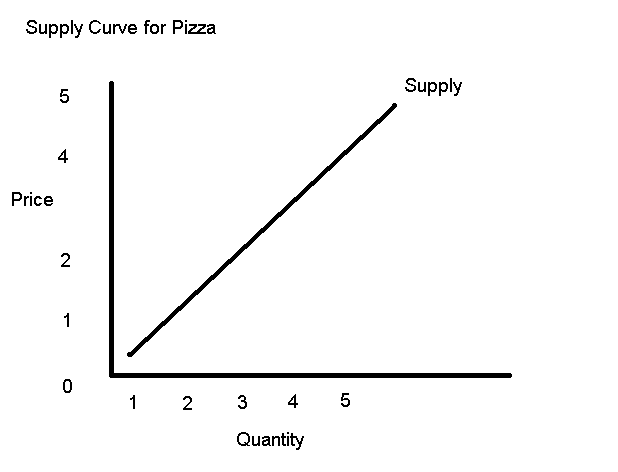
Equilibrium Price
The idea here is that all of this stuff will keep adjusting until supply equals demand. The price at which the available supply equals the demand is called the equilibrium price.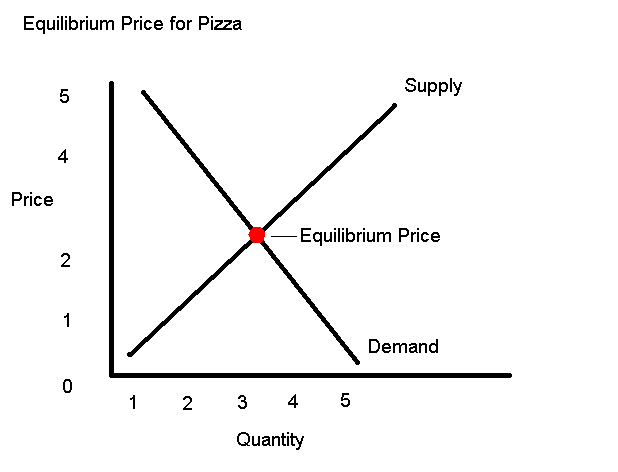
Effects of Poor Pricing
And just for fun, we can see what happens when someone gets the pricing of a product wrong.Think of what would happen if Microsoft priced the xBox 360 incorrectly. If the folks at Microsoft set their prices too high, then they could end up with a lot of extra (surplus) xBoxes. We might graph that like this:
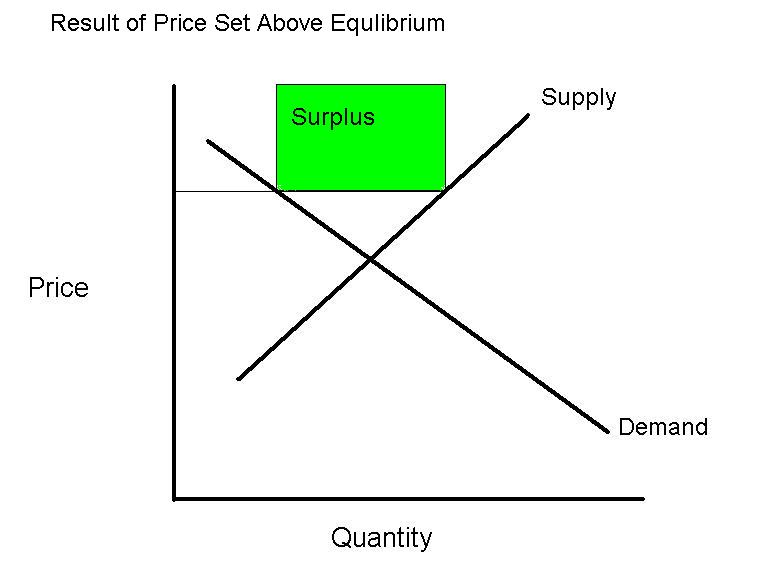
On the other hand, if those games designing geniuses price it too low, there could be a shortage of xBoxes. We could graph that like this:
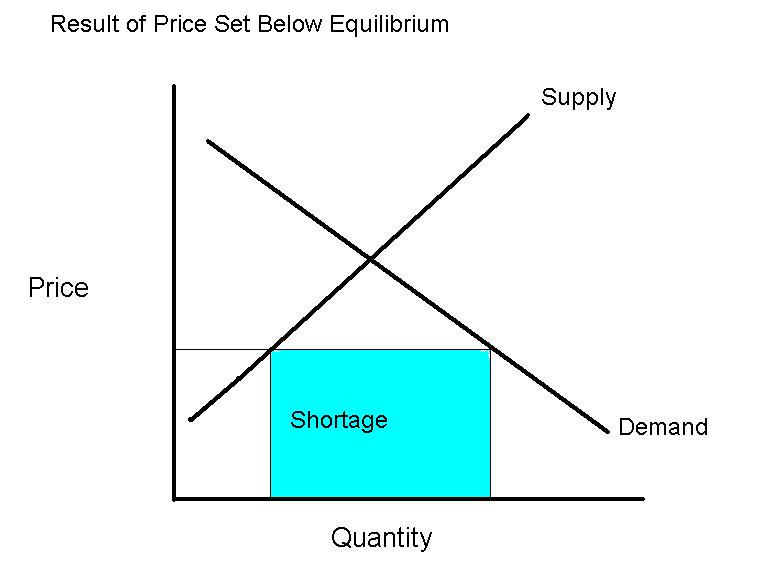
Well, there you have it. Hopefully you aren't totally confused. For practice, try to imagine what would happen if the prices of your favorite food or beverage suddenly dropped or increased. What would you do? Then imagine that there is a shortage of those items, or a surplus. What would happen then?

